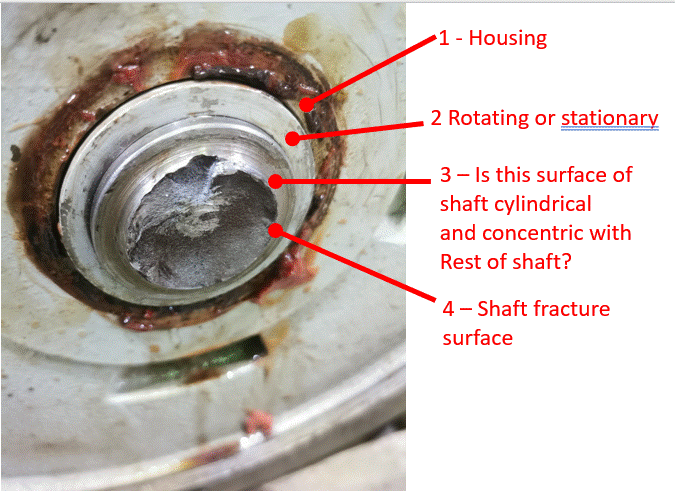Aptx4869
Mechanical
- Mar 1, 2018
- 44
Hi All
Recently we had a failure on a motor shaft (attached)
the motor is vertical and connected to lube oil centrifugal pump via grid coupling
After the failure, we confirmed both motor shaft and pump shaft are rotating freely
The only finding was pump shaft runout to be 7 mils. We measured that runout with pump assembled (not on V block)
New pumps will have 2 mils or less when we measure the shaft runout with pump assembled.
Any idea if that amount of runout will cause such failure ?
Recently we had a failure on a motor shaft (attached)
the motor is vertical and connected to lube oil centrifugal pump via grid coupling
After the failure, we confirmed both motor shaft and pump shaft are rotating freely
The only finding was pump shaft runout to be 7 mils. We measured that runout with pump assembled (not on V block)
New pumps will have 2 mils or less when we measure the shaft runout with pump assembled.
Any idea if that amount of runout will cause such failure ?

